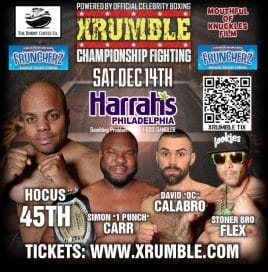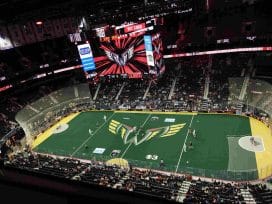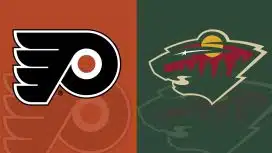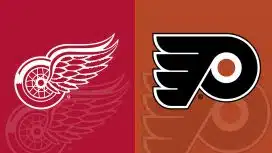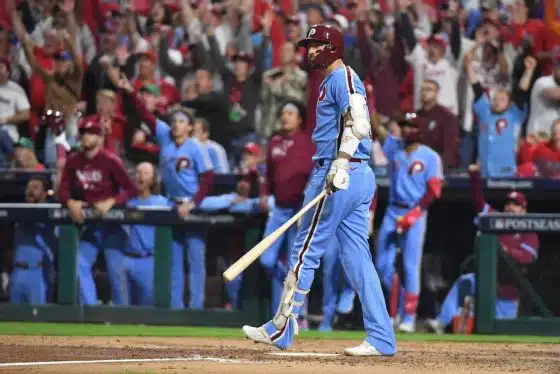Phillies
Phillies and Athletics Uniform Options for City Series Retro Night
I don't think the chances of these uniforms being worn is particularly high. The only reason why they might be a consideration is they were worn exactly 100 seasons ago. Neither club was particularly good, the Phillies were 62-91 while the Athletics were worse at 48-106. However, the bonus to wearing these uniforms is New Era already made a similar cap when the Phillies wore 1915 retro caps against the Red Sox in 2015. Any retro night is bound to make stadium cash registers ring with limited availability retro night attire.
Another option for both clubs are 1921-1922 uniforms. The Athletics and Phillies uniforms are unique for these two years. The Athletics altered the elephant design for 1921, which remained on both home and away uniforms through 1927. The elephant from 1921-23 was blue but changed to white in 1924 through 1927. The home cap had a blue visor, blue soutache pinstriping with white panels while the away cap had a blue visor and panels with white soutache piping. Both home and away uniforms were appealing, with the away version being an interesting option to wear on City Series retro night.
The Phillies meanwhile completely changed their uniforms and for two years wore a design popularized by the Chicago Cubs since the 1940s, with blue pinstripes and a red P inside a blue circle. Like the 1921-23 Athletics, the Phillies' new design was the same for both home and away, the only difference being white home uniforms and gray away uniforms. The cap left a lot to be desired for – it was a simple navy cap with no logo or insignia whatsoever. It would be interesting if the Phillies chose this design but a plain navy blue cap won't sell well at the ballpark. As mentioned earlier, the Phillies wore 1915 style caps when the Red Sox visited Philadelphia in 2015 to commemorate the 100th anniversary of the 1915 World Series between the Phils and Red Sox. The Red Sox were to wear 1915 caps as well but elected to wear their normal cap. The club didn't explain the decision, but the 1915 Red Sox cap was a plain gray cap. Not very exciting.
These options are intriguing but will likely be overlooked for the next two options. The Phillies were putrid in between 1918 and 1948, recording only one winning season in that 30 year span, despite having one of the eras greatest players, Chuck Klein, on the roster. The Athletics meanwhile developed a powerhouse lineup with "Double X" Jimmie Foxx, Mickey Cochoran, and Al Simmons which ultimately won three pennants and two World Series between 1929 and 1931. The uniforms worn by both clubs in the late 1920s can be considered true classics.
Beginning in 1928, the Athletics replaced the elephant with the script A and replaced the pinstripe caps with a blue bill, white panel cap complete with a blue script A on the front. These particular uniforms and caps have been reproduced by the likes of Mitchell & Ness and American Needle recently because of their aesthetic appeal and the association with the great Athletics of the late 1920s and early 1930s, a team that are considered by some the best team in major league history. The uniform design endured with slight variations while the club was in Philadelphia through 1953. The Athletics even wore the 1929 home uniform during a 2009 contest against the Chicago White Sox.
The Phillies meanwhile overhauled their uniforms in 1925, adding a red Old English P to their white home uniforms through 1933. A cap with a red visor, white panels and red Old English P was worn with all home uniforms from 1925 through 1932. The away uniforms varied slightly in design with the Old English P sometimes on the chest and other times on the shoulder inside a diamond. The Phillies brought this uniform design back to life on August 1, 1993 when they played the Pirates at Veterans Stadium. The cap has been made by American Needle for several years and a New Era one-size-fits-all cap has been available for purchase at Citizens Bank Park for a few years now.
There are few options for both clubs for City Series retro night, if they do in fact choose to wear throwback uniforms and the league approves the request, but all of the options are appealing and would be a refreshing departure from the consistent 1970s-1980s throwbacks that have been too common in recent years. The Phillies alone have 138 years of uniform history to choose from, so throwing in an oddball from the 1920s would be a lot of fun and help fans engage with the club's more distant past. Personally, I believe the clubs should and will wear late 1920s throwbacks; they're clean, unique, and easily recognizable. In any event, we'll be sure to update you on any uniform updates and throwback events throughout the season, as well as City Series content.

